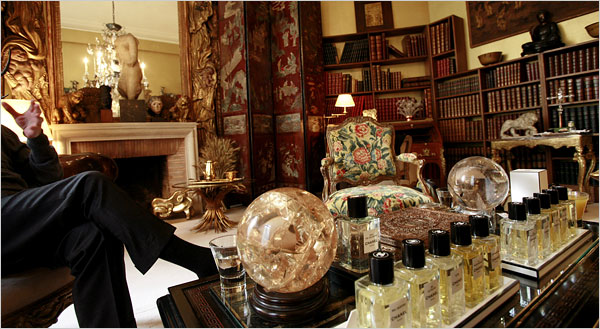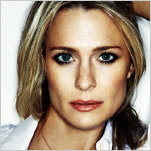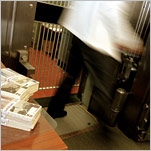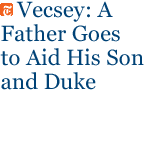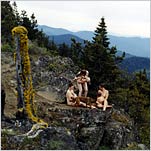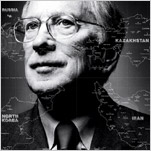PARIS
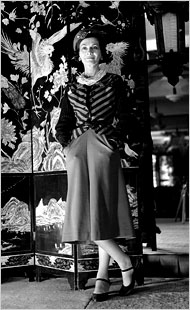
Coco Chanel in 1937.
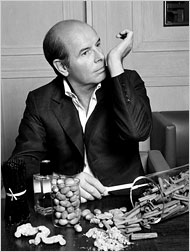
Mr. Polge at work.
AT 31, rue Cambon, near the Place de la Concorde and on the third floor above the Chanel store, there is an apartment with exquisite 17th-century Chinese wooden screens, no kitchen and no bedroom. Jacques Polge is the Chanel perfumer, and he knows the apartment well because it belonged to the woman everyone at Chanel refers to as “Mademoiselle.”
Coco Chanel slept and ate at the Ritz, but she entertained here. (Dinner was brought in by servants.) On one of Mr. Polge’s visits, while the apartment was closed and off limits to all but the most trusted insiders, he noticed the screens. That was years ago, however, and that is getting ahead of the story.
Since 1978, Mr. Polge has exercised a unique power in the industry. He alone both curates and guards the work of his two (only two) Chanel perfumer predecessors, Ernest Beaux and Henri Robert. He also invents new Chanel perfumes.
His latest project was inspired in a roundabout way by his first encounter with Chanel’s apartment.
“I was new at Chanel, and I was very surprised by this décor,” he said. He was impressed by the rich and detailed silver and gold boxes, luxurious Art Deco furniture and leather-bound books, which stood out against the apartment’s celadon walls.
“I said, ‘What’s that, and what’s this?’ ” Mr. Polge said. “I was thinking, ‘I wonder how these objects are represented in her perfumes,’ not only the ones that still existed but also those that were no longer sold.”
On Feb. 12, Mr. Polge tried to answer the questions he posed to himself at 31, rue Cambon with the release of a collection of 10 perfumes called Les Exclusifs. There will be no marketing and no ads, and the perfumes will be sold only in Chanel boutiques and at Bergdorf Goodman, in 200-milliliter spray bottles of eau de toilette, an unusually large size. Each will cost $175.
With the collection Mr. Polge restores four Chanel fragrances that had disappeared: Chanel No. 22 (from 1922), which Mr. Beaux created the year after he created No. 5. The other three Chanel perfumes are also from the ’20s: the rich leather Cuir de Russie, the green floral Gardénia and the spicy Bois des Îles.
To complement them he has created six new Chanel perfumes, almost doubling the number of post-World War II Chanels “in print.” (Among those are Coco, Coco Mademoiselle and No. 19.)
In the scent business the collection is regarded as an audacious move. “A 10-perfume collection is a huge number,” said Alain Lorenzo, the president of Parfums Givenchy France. “Perhaps they felt a single perfume wouldn’t make an impact.”
But if Mr. Lorenzo expresses surprise (“Chanel has traditionally exercised more restraint in their launches”), he adds that, correctly managed, Les Exclusifs make strategic sense.
Mr. Lorenzo said, “A lot of traditional players — like us — are worried” by mass market perfumers, “who churn things out all the time with no content and no beauty but commercial appeal for a short-term win.”
“For the high-end players who believe in luxury and scarcity and real design and a perfumery about creative fragrances that will surprise people, this could work well,” he said. “There’s an element of rarity and high end in their proposition."
Kate Greene, the vice president for marketing fine fragrances in North America at Givaudan, said that 800 new fragrances are expected to make their appearance in 2007. Yet Chanel’s collection, she said, is “great for that part of the industry in search of innovation.”
All six of Mr. Polge’s new Les Exclusifs represent ideas that fascinated him.
“What interested me intellectually,” he said of one, "was to create a chypre,” a family of fragrances, “that characterizes a certain elegance, but to challenge myself to do it without the traditional chypre oak moss.” He took a journey through the patrimony of Chanel: the places she went, the houses she lived in and the objects she loved.
And because he had been so struck by the elegance of her apartment he named his elegant modernized chypre after it: 31, rue Cambon.
Sitting in the living room there, Mr. Polge pointed to Chanel’s lacquered 17th-century Chinese wooden screens — called coromandel — which he saw so many years ago, and noted that he gave this name to another of his perfumes, an unclassifiable rich scent of tangy fruit peel, amber and, naturally, burnished wood.
Bel Respiro, his green scent, which smells of hyacinth and fresh-cut grass, was named after Chanel’s country house in Garche, just outside Paris. (She housed the composer Stravinsky there.)
And he did an iris and decided to name it 28 La Pausa after a house Chanel built on the Côte d’Azur, whose gardens were filled with irises.
Mr. Polge’s most traditional scent, his Eau de Cologne, is the only new Exclusif available in a 400-milliliter splash, at $300, and the only one not anchored in a part of Chanel’s life. “I just felt every perfumer should have an eau de cologne,” he said with a laugh.
Mr. Polge readily talks about his hope for the widest possible appreciation of Les Exclusifs. “From the moment you want to sell a thing, you do marketing.”
He added, “Even when one says one doesn’t do it, which is just another way of doing it.”
But in sales Chanel is taking a risk. According to the NPD Group, which provides market data on the fragrance business, Chanel No. 5 was second and Coco Mademoiselle sixth of the top 10 selling fragrances in 2006, with Chance in the top 20. Will the Exclusifs collection divert the Chanel customer and thus hurt the status of its market leaders?
Karen Grant, the senior beauty industry analyst at NPD, believes not. “I think it’s going to be a niche part of their business,” she said.
Les Exclusifs also represent a subtler strategic gambit: positioning. “Chanel is trying to establish the role of the perfumer taking the lead, whereas the craze on the lower end is with the celebrity perfumes,” Ms. Grant said. “It’s establishing the perfumer, making a statement."
It is Mr. Polge who selects, buys and in some cases even designs the raw materials he has put in Les Exclusifs. For the last scent he got up and led the way through the Ritz and across to 18, place Vendôme, the Chanel jewelry boutique, which opened in 1997.
Upstairs, Mr. Polge sprays it on a blotter and asks, “Do you smell jewels in my No. 18?” and the perfume does in fact have an angular construction with a crystalline character like a translucent stone.
Some figures in the perfume business noted that such collections are not new. “It’s interesting to see that Chanel with Les Exclusifs has today an approach identical to Hermès with its Hermessences,” super-high-end perfumes reserved for the brand’s own stores, said Olivier Monteil, a spokesman for Hermès.
Hermès began its line in 2004. Its seventh Hermessence is to join the collection in November.
And Ms. Grant of NPD observed, “We’ve seen a few prestige brands that have come out with wardrobes of fragrance — Marc Jacobs, Thierry Mugler’s trio of Stars — so this is not a new trend.” But, she said, “the collection is so large and the price point so exclusive, it is in harmony with Chanel.”
Ms. Greene of Givaudan noted the Armani Privé, Dior and single-note Prada collections. But she described Les Exclusifs as fundamentally different.
“This may be the way for people to appreciate perfume, the anti-commoditization, true luxury piece of perfume,” she said.
“At this instant,” she added, “I have seven blotters on my desk, things I’m smelling right now. Six are Les Exclusifs."



